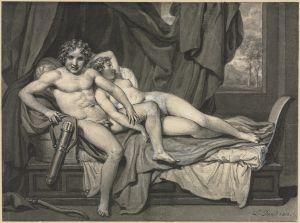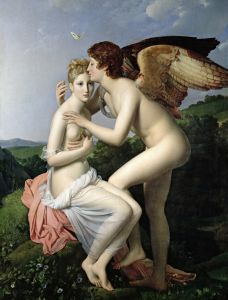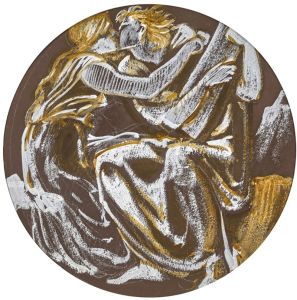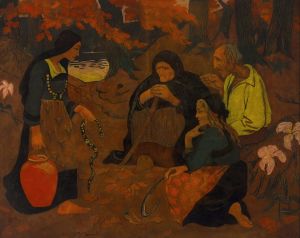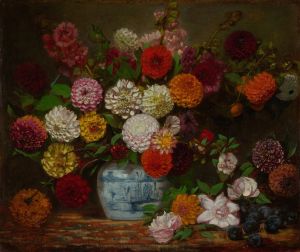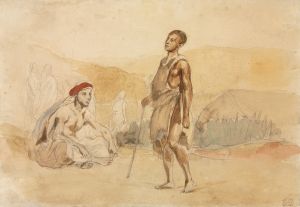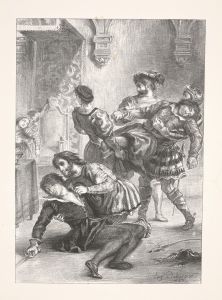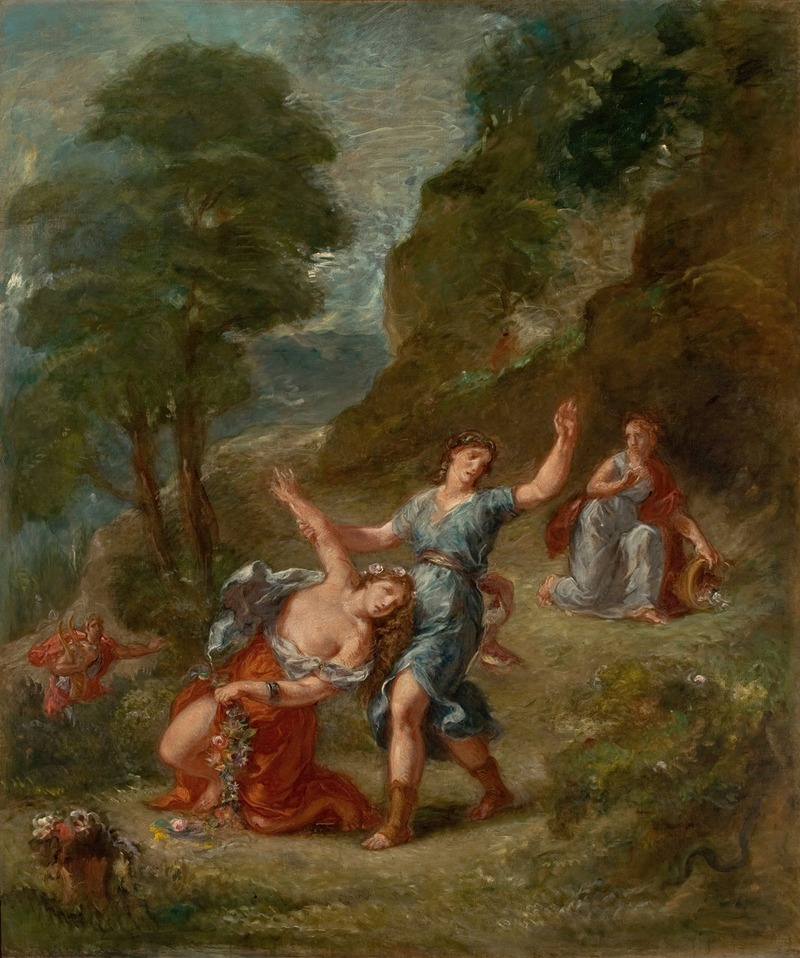
The Spring – Eurydice bitten by a serpent while picking flowers
A hand-painted replica of Eugène Delacroix’s masterpiece The Spring – Eurydice bitten by a serpent while picking flowers, meticulously crafted by professional artists to capture the true essence of the original. Each piece is created with museum-quality canvas and rare mineral pigments, carefully painted by experienced artists with delicate brushstrokes and rich, layered colors to perfectly recreate the texture of the original artwork. Unlike machine-printed reproductions, this hand-painted version brings the painting to life, infused with the artist’s emotions and skill in every stroke. Whether for personal collection or home decoration, it instantly elevates the artistic atmosphere of any space.
Eugène Delacroix, a prominent French Romantic artist, is renowned for his expressive brushwork and vibrant use of color. One of his lesser-known works, "The Spring – Eurydice bitten by a serpent while picking flowers," captures a poignant moment from classical mythology. This painting illustrates the tragic tale of Eurydice, a character from Greek mythology, who was the wife of Orpheus, a legendary musician and poet.
The myth of Orpheus and Eurydice has been a source of inspiration for many artists throughout history. According to the myth, Eurydice was wandering in a meadow, picking flowers, when she was bitten by a venomous serpent. This bite led to her untimely death, which set the stage for Orpheus's descent into the Underworld to retrieve her. Delacroix's painting focuses on the moment of the serpent's bite, capturing the drama and tragedy of the scene.
Delacroix was known for his ability to convey emotion and movement in his paintings, and "The Spring – Eurydice bitten by a serpent while picking flowers" is no exception. The composition likely emphasizes the tension and suddenness of the event, with Eurydice's figure possibly portrayed in a dynamic pose that reflects her surprise and pain. Delacroix's use of color and light would have been instrumental in highlighting the contrast between the serene beauty of the natural setting and the violent intrusion of the serpent.
While specific details about this particular painting are scarce, Delacroix's broader body of work provides context for understanding his approach to such mythological subjects. He often drew inspiration from literature, history, and mythology, using these themes to explore human emotion and experience. Delacroix's Romantic style is characterized by its emphasis on emotion, individualism, and the sublime, often depicted through dramatic and exotic subjects.
Delacroix's interest in classical themes and his ability to infuse them with contemporary relevance made his work stand out during his time. His paintings often reflect a deep understanding of the human condition, exploring themes of love, loss, and the struggle against fate. In "The Spring – Eurydice bitten by a serpent while picking flowers," Delacroix would have aimed to capture the fleeting nature of life and the inevitability of death, themes that resonate deeply within the myth of Orpheus and Eurydice.
Although "The Spring – Eurydice bitten by a serpent while picking flowers" may not be as widely recognized as some of Delacroix's other works, it nonetheless exemplifies his skill in storytelling through art. By focusing on a critical moment in the myth, Delacroix invites viewers to reflect on the fragility of life and the power of love, themes that are as relevant today as they were in ancient times.
In summary, Eugène Delacroix's "The Spring – Eurydice bitten by a serpent while picking flowers" is a testament to his mastery of Romantic art and his ability to breathe new life into classical myths. Through his dynamic composition and emotive use of color, Delacroix captures the tragic beauty of Eurydice's story, offering a timeless exploration of human emotion and the inexorable forces of fate.





